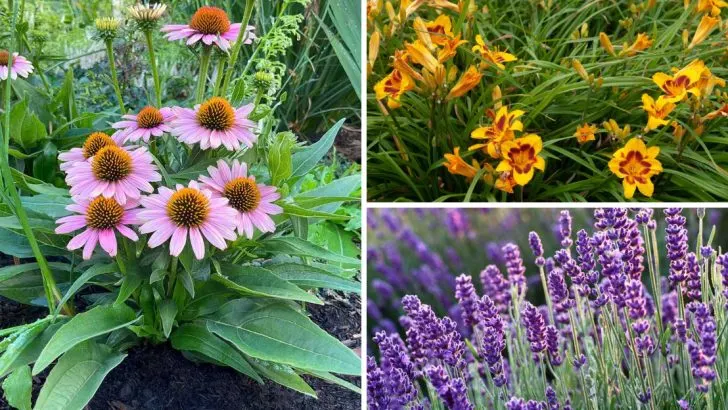If the idea of gardening without the constant need for fertilizers sounds appealing, you’re in for a treat. There’s a growing trend of fertilizer-free gardening that’s both eco-friendly and low-maintenance, and the best part? There are plenty of plants that thrive without needing extra boosts of fertilizer. It’s all about choosing the right plants that can grow strong and healthy with the natural nutrients in the soil, making your gardening experience more effortless and sustainable.
From vibrant flowers to hearty vegetables, there’s a wide range of plants that don’t require fertilizers to flourish. These plants are naturally resilient and often better suited to the local environment, reducing the need for chemical additives. Not only will you save on gardening costs, but you’ll also be doing your part for the planet. The next time you’re planning your garden, consider incorporating some of these hardy, self-sufficient plants—they’ll do well on their own and give you a beautiful, thriving garden with minimal effort.
Lavender
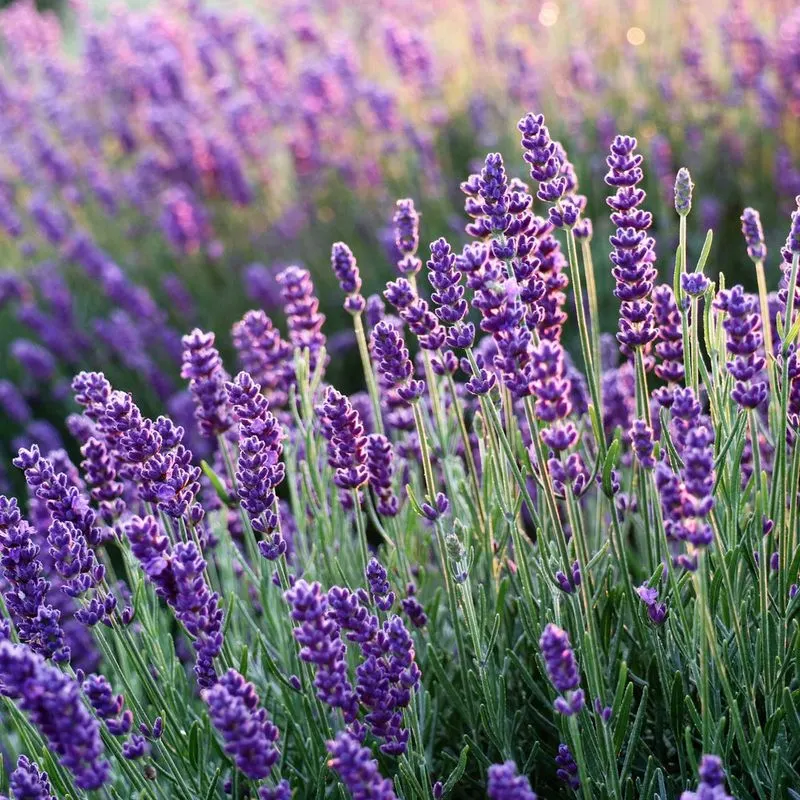
Lavender, with its fragrant purple blooms, is a hardy plant that thrives in well-drained soil and full sun. This perennial is drought-tolerant, making it perfect for gardens where watering is limited.
Lavender not only attracts pollinators like bees and butterflies but also serves as a natural pest deterrent. Its aromatic qualities are perfect for creating relaxing spaces.
Prune lavender annually to maintain its shape and encourage blooms. Ideal for borders, rock gardens, or containers, lavender brings both beauty and functionality to your garden without the need for fertilizers.
Thyme
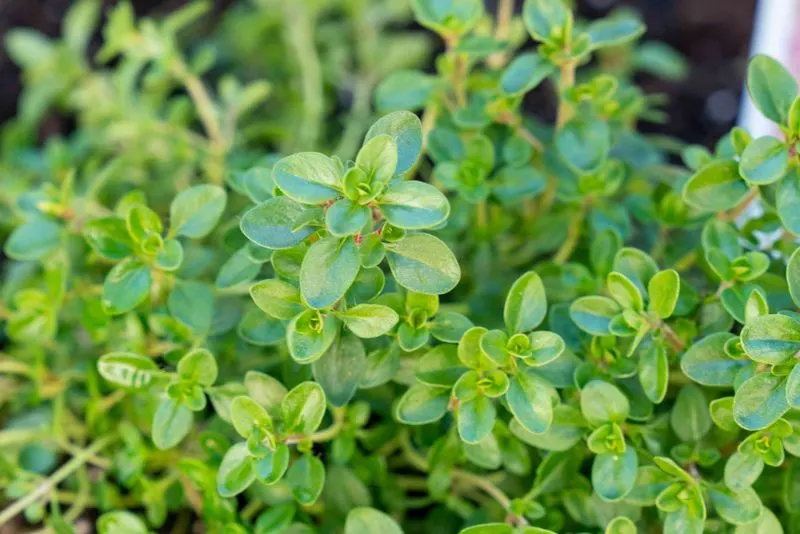
Thyme is a robust herb that thrives in rocky, well-drained soil and full sun. Its tiny leaves pack a punch of flavor, making it popular in culinary uses.
Thyme’s resilience allows it to grow in less-than-ideal soil conditions, needing little care once established. This herb is an excellent ground cover and can even be used between stepping stones.
Its small flowers attract beneficial insects, supporting garden biodiversity. Thyme’s versatility and easy maintenance make it a perfect addition to any fertilizer-free garden, providing both aesthetic and practical benefits.
Sedum
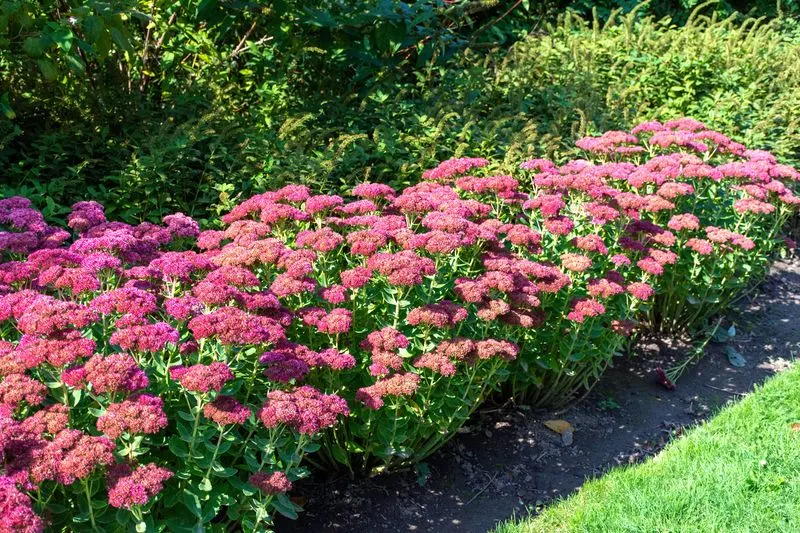
Sedum, known for its ability to thrive in poor soil, is a succulent that adds texture and color to gardens. Its fleshy leaves store water, allowing it to withstand drought conditions effectively.
With varieties ranging in color and size, sedum is ideal for rock gardens, green roofs, and borders. Its flowers attract pollinators, promoting a healthy garden ecosystem.
Sedum requires minimal care, making it perfect for busy gardeners. Divide plants every few years to encourage growth and prevent overcrowding.
Sedum is a resilient choice for those seeking a low-maintenance, fertilizer-free garden.
Yarrow
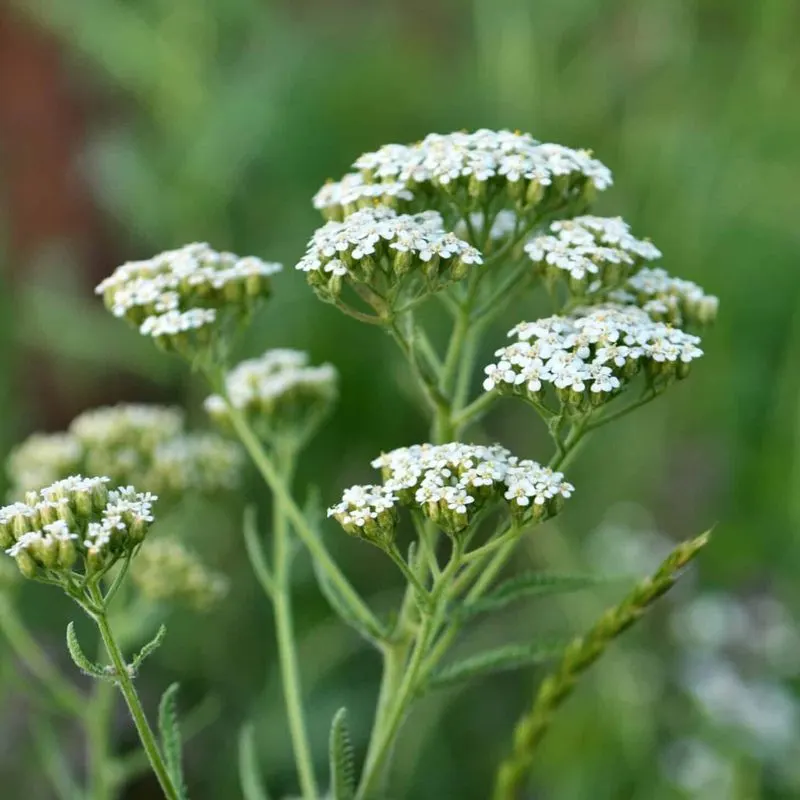
Yarrow is a versatile perennial that thrives in poor soil and full sun. Its fern-like leaves and clusters of flowers are not only attractive but also beneficial to pollinators.
Yarrow is known for its medicinal properties and can be used in teas and tinctures. This plant requires little water once established and can improve soil quality by enhancing soil structure.
Yarrow is ideal for wildflower gardens and natural landscaping. Its drought tolerance and ability to attract beneficial insects make it a valuable addition to any fertilizer-free gardening plan.
Echinacea
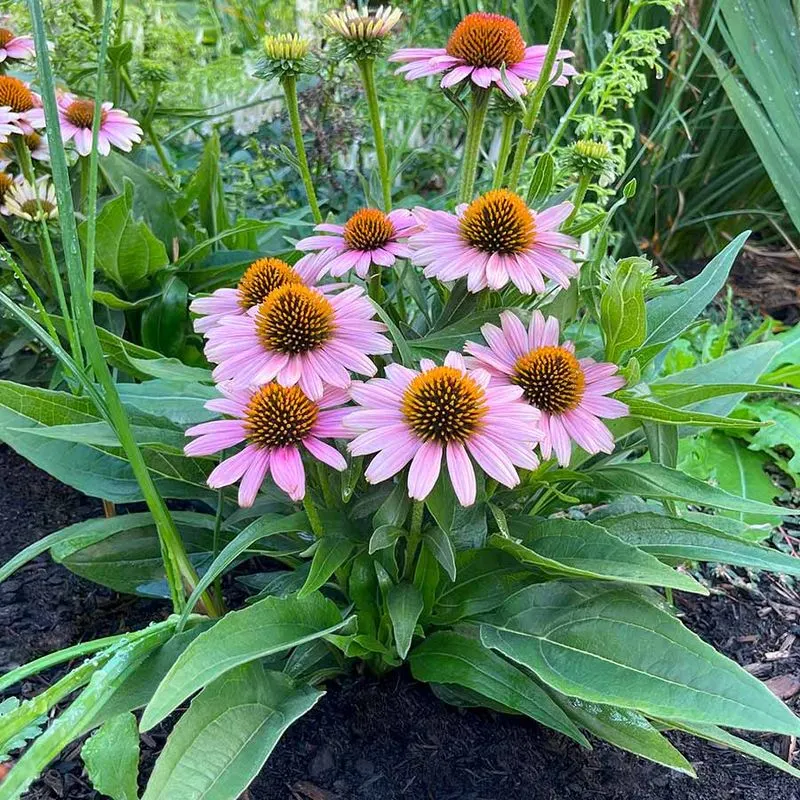
Echinacea, commonly known as coneflower, is a hardy perennial that thrives in a variety of soil conditions. Its striking purple blooms add color and attract pollinators such as bees and butterflies.
Echinacea is also prized for its medicinal properties, often used in herbal remedies to boost immunity. This plant is drought-resistant and requires minimal care, making it ideal for gardeners seeking low-maintenance options.
Plant echinacea in a sunny spot for best results, and enjoy its beauty and health benefits without the need for fertilizers. Its resilience makes it a top choice for self-sufficient gardens.
Russian Sage
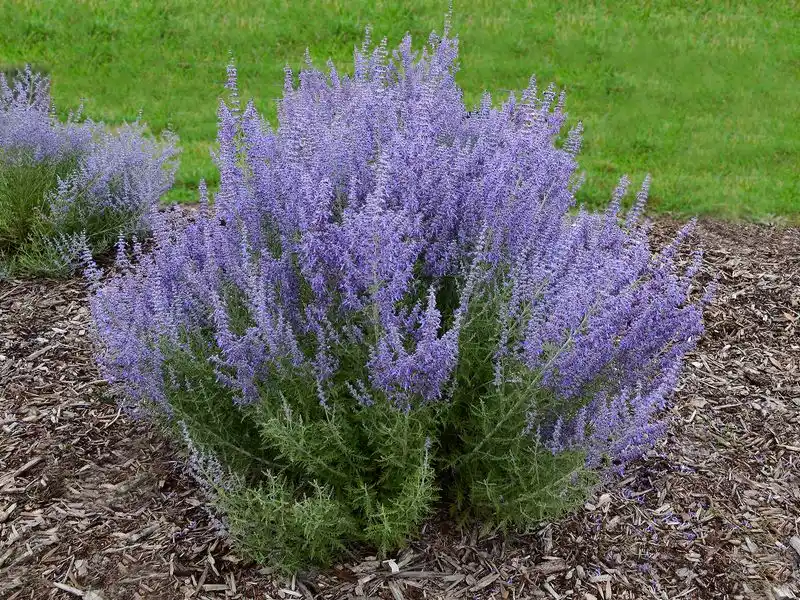
Russian sage is a resilient perennial that thrives in full sun and well-drained soil. Its tall, airy stems and silvery foliage make it a striking addition to any garden.
The delicate purple flowers attract pollinators like butterflies, supporting local biodiversity. Russian sage requires little water once established and is resistant to pests and diseases.
Pruning in early spring encourages new growth and maintains its shape. This plant is perfect for adding texture and color to borders and mixed plantings, offering beauty and sustainability without the need for fertilizers.
Daylilies
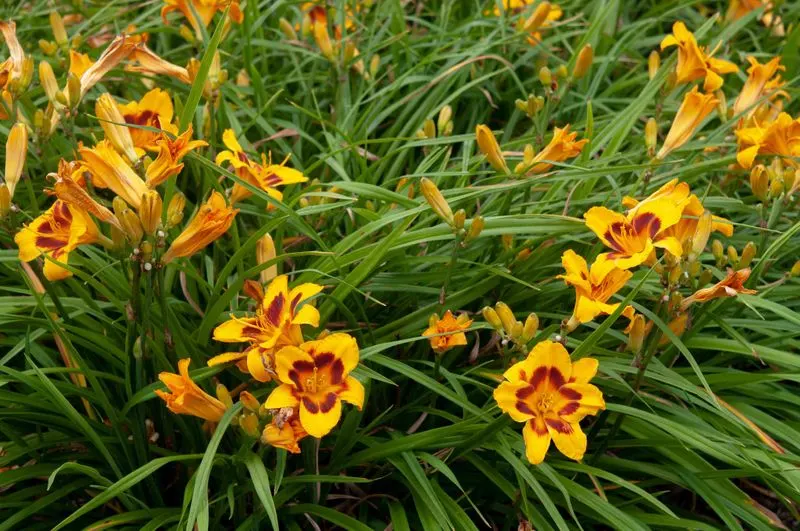
Daylilies are hardy perennials that thrive in a range of soil conditions and climates. Known for their vibrant blooms, they require minimal maintenance once established.
Daylilies are drought-tolerant and can thrive without fertilizers, making them ideal for sustainable gardens. These plants are perfect for borders, mass plantings, or as ground cover.
Daylilies benefit from deadheading to encourage continuous blooms. With a vast array of colors available, they add visual interest and attract pollinators, supporting garden health.
Their adaptability and ease of care make daylilies a favorite among gardeners.
Rosemary
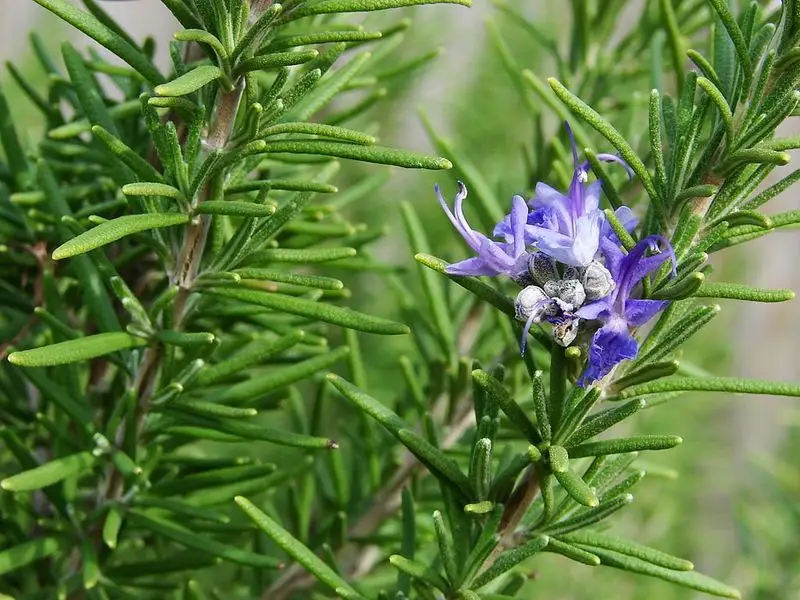
Rosemary, a Mediterranean herb, thrives in sunny climates and well-drained soil. Its needle-like leaves are aromatic, making it a favorite for culinary uses.
Rosemary is drought-tolerant and requires minimal care once established, thriving without fertilizers. Its blue flowers attract pollinators, enhancing garden biodiversity.
This herb is suitable for containers, borders, or as a fragrant hedge. Regular pruning encourages bushy growth and can be harvested for use in cooking.
Rosemary’s resilience and versatility make it an excellent choice for gardeners seeking a low-maintenance, self-sustaining plant.
Butterfly Weed
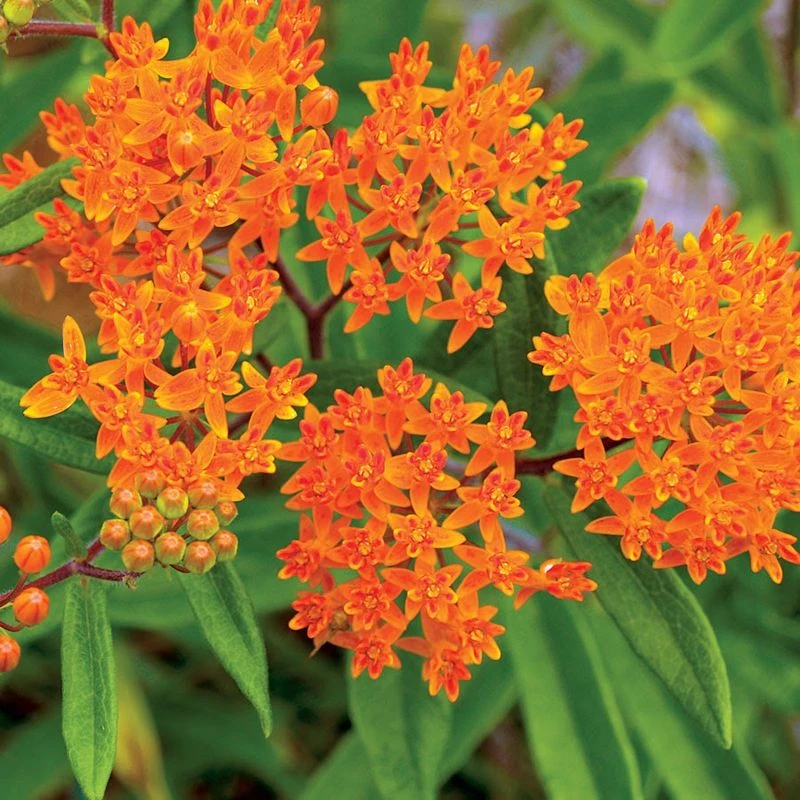
Butterfly weed is a stunning perennial known for its vibrant orange flowers that attract butterflies and other pollinators. This plant thrives in full sun and well-drained soil, requiring minimal care once established.
Its deep taproot makes it drought-tolerant and perfect for dry, sandy areas. Butterfly weed is also a host plant for monarch butterflies, supporting their life cycle.
This low-maintenance plant adds a splash of color to native gardens and wildflower meadows. Its ability to thrive without fertilizers makes butterfly weed a valuable addition to eco-friendly and sustainable gardening practices.
Hosta
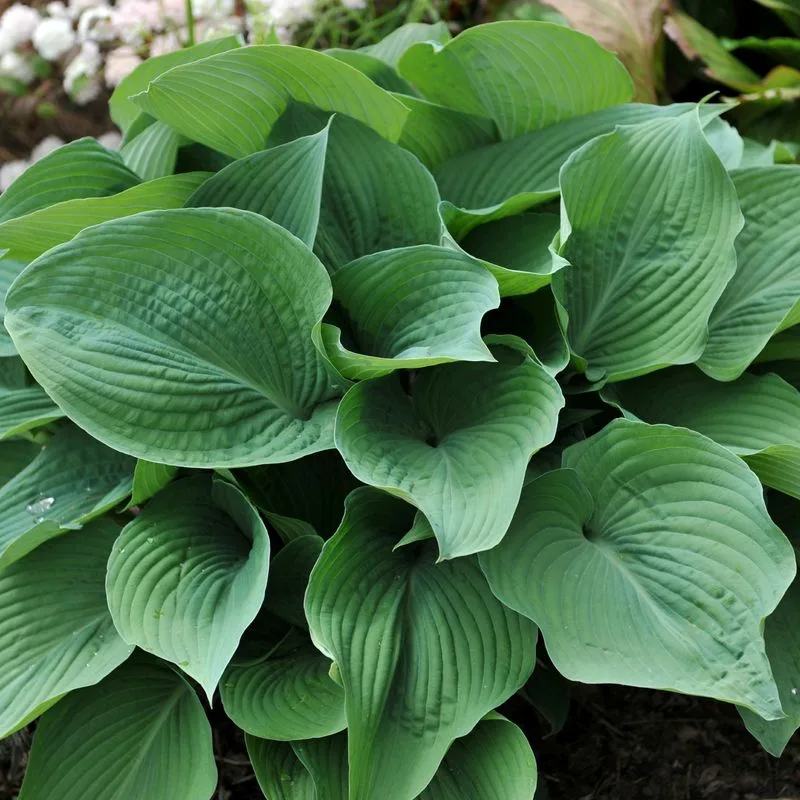
Hostas are shade-loving perennials known for their lush foliage and variety of leaf patterns. They thrive in rich, well-drained soil and require little care once established.
Hostas are perfect for adding texture and interest to shaded garden areas. While they prefer moist soil, they can tolerate drought conditions for short periods.
Hostas are low-maintenance and can be divided every few years to encourage growth. Their ability to grow without fertilizers and their versatility in garden design make them a popular choice for gardeners seeking self-sustaining plants.
Creeping Jenny
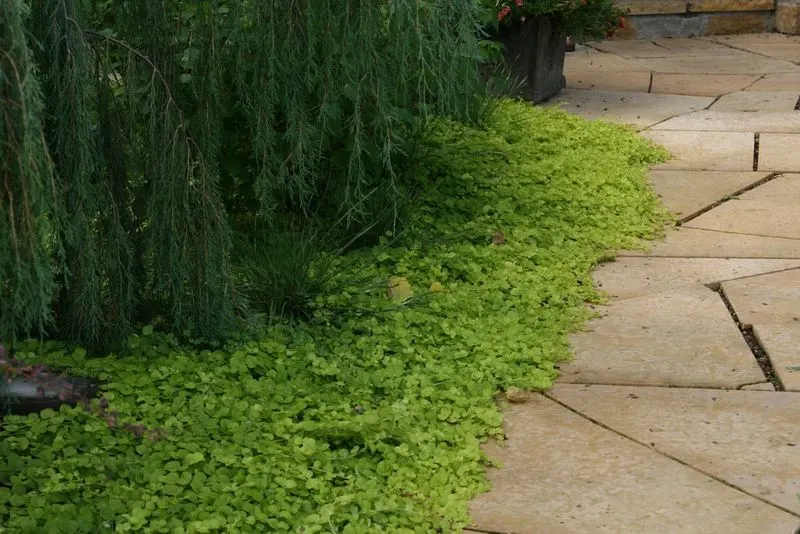
Creeping Jenny is a versatile ground cover known for its vibrant yellow-green leaves. It thrives in moist, well-drained soil and can adapt to various light conditions.
This plant is perfect for covering large areas, including slopes and banks, and adds a splash of color to gardens. Creeping Jenny requires minimal maintenance and no fertilizers.
It’s ideal for container gardens, hanging baskets, and as an accent in water features. Its cascading habit makes it visually appealing, and its resilience ensures it thrives in different environments, making Creeping Jenny a favorite among gardeners.
Catmint
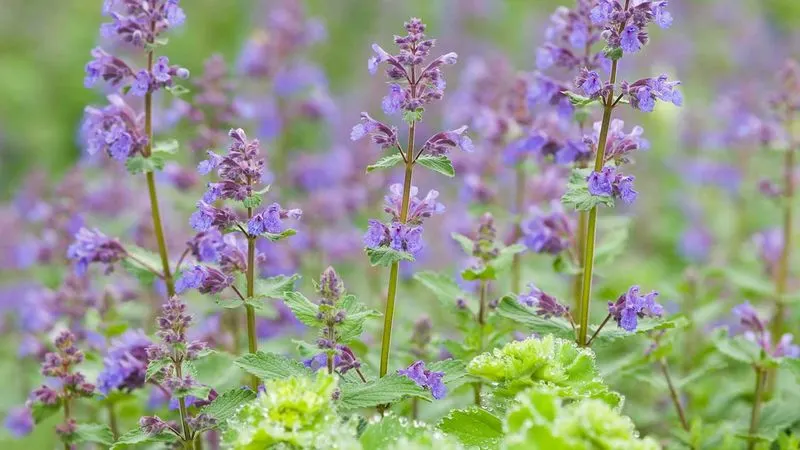
Catmint is a perennial herb known for its aromatic foliage and spikes of lavender-blue flowers. Thriving in full sun and well-drained soil, it’s a favorite among pollinators, attracting bees and butterflies.
Catmint is drought-resistant once established, requiring little water and no fertilizers. Pruning after the first bloom encourages a second flowering, adding color to gardens throughout the season.
This plant is ideal for borders, rock gardens, and cottage gardens, offering both beauty and resilience. Its easy-care nature and aromatic qualities make catmint a popular choice for low-maintenance, self-sustaining gardens.
Coreopsis
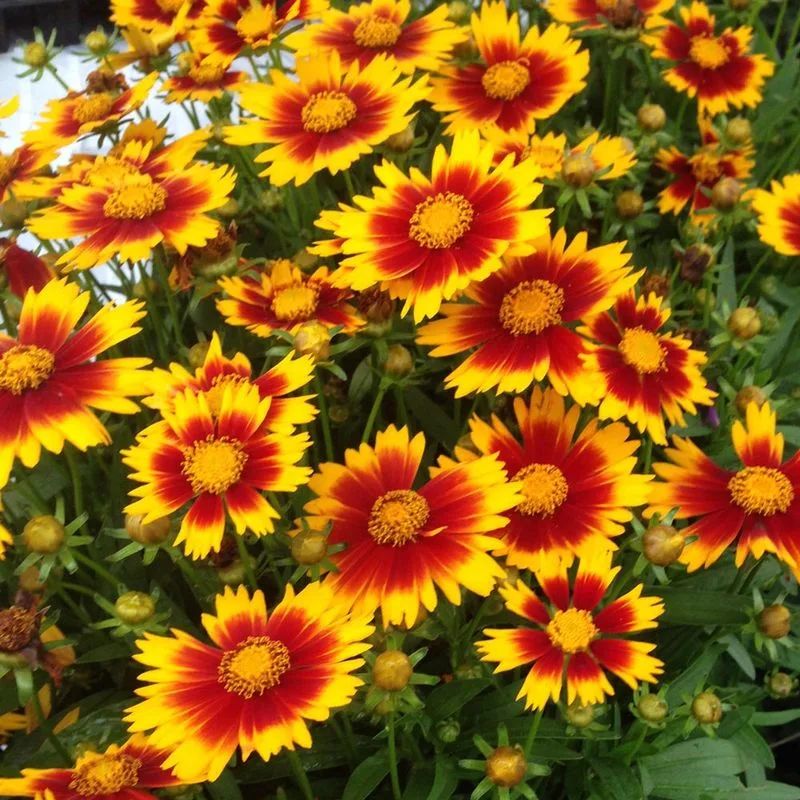
Coreopsis, often called tickseed, is a hardy perennial known for its bright yellow flowers that bloom throughout summer. It thrives in well-drained soil and full sun, requiring minimal care.
Coreopsis is drought-tolerant, making it perfect for eco-friendly gardens. Deadheading encourages continuous blooms, adding vibrant color to landscapes.
This plant attracts pollinators, including bees and butterflies, supporting garden biodiversity. Coreopsis is suitable for borders, wildflower gardens, and mass plantings.
Its ease of care and ability to flourish without fertilizers make it an excellent addition to any sustainable garden.
Lamb’s Ear
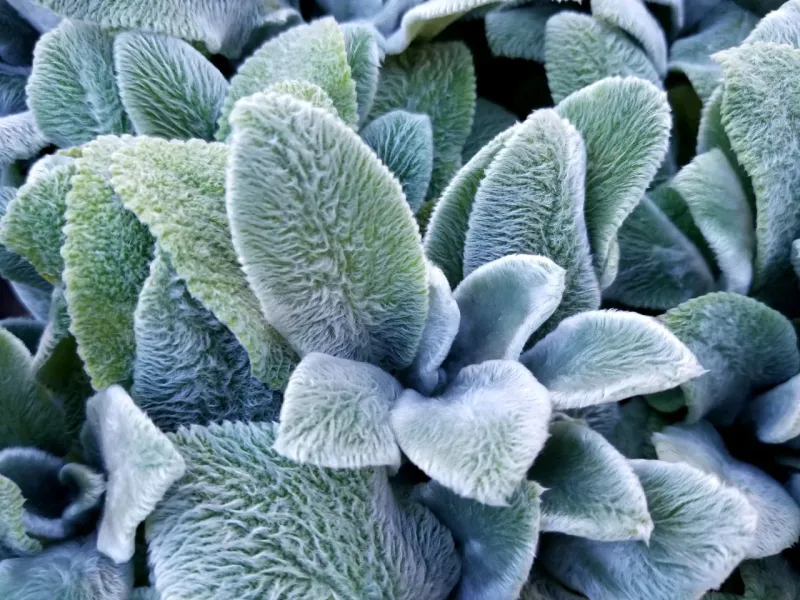
Lamb’s ear is a perennial known for its soft, silvery foliage that adds texture and contrast to gardens. It thrives in well-drained soil and full sun, requiring minimal care once established.
This plant is drought-tolerant and does not need fertilizers, making it ideal for sustainable gardening. Lamb’s ear is often used as ground cover or in borders, adding visual interest.
It attracts pollinators, particularly bees, when in bloom. Regular pruning helps maintain its appearance and prevents overcrowding.
Lamb’s ear’s unique texture and low-maintenance nature make it a popular choice for eco-conscious gardeners.
Stonecrop
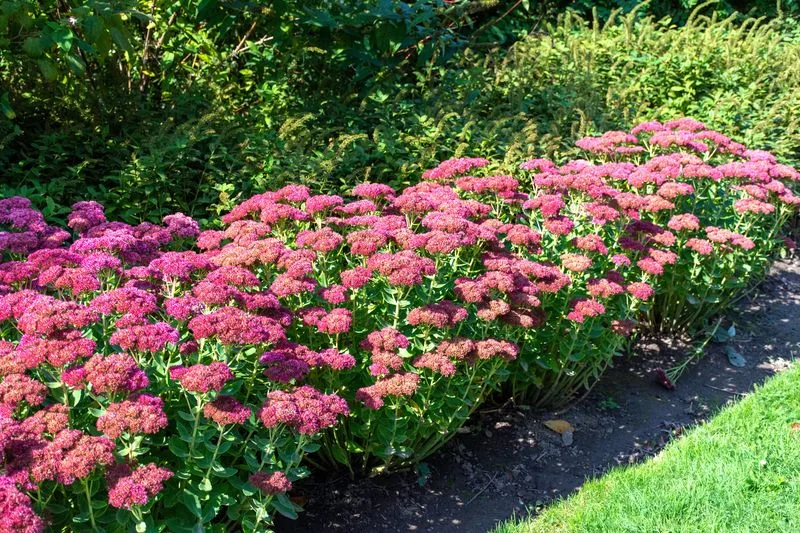
Stonecrop, a type of sedum, is a hardy succulent that thrives in rocky, well-drained soil. Its diverse range of colors and shapes makes it a versatile choice for gardens.
Stonecrop is drought-tolerant and requires minimal maintenance once established. It’s perfect for rock gardens, green roofs, and ground cover.
The plant’s flowers attract pollinators, supporting garden health and biodiversity. Stonecrop’s ability to thrive in tough conditions without fertilizers makes it a valuable addition to sustainable gardens.
Its low-maintenance nature and adaptability make it a favorite among gardeners seeking resilient plant options.
Black-Eyed Susan
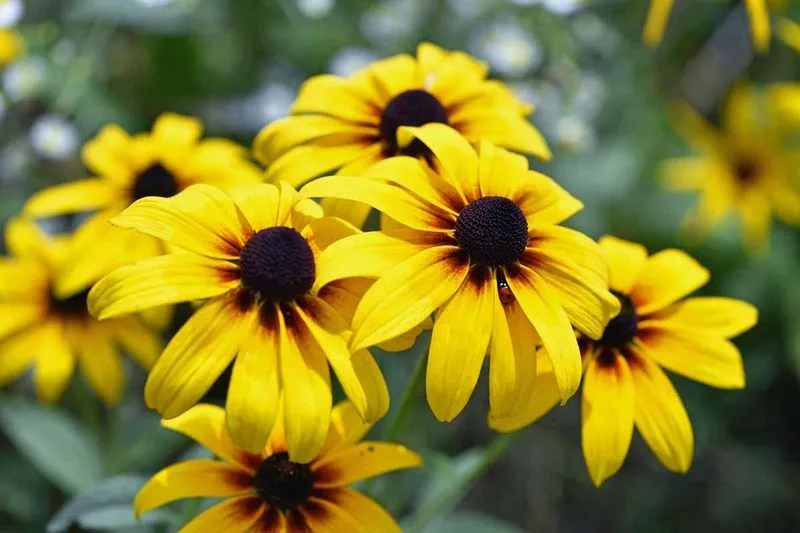
Black-eyed Susan is a vibrant perennial known for its bright yellow petals and dark centers. It thrives in full sun and well-drained soil, requiring minimal care.
This plant is drought-tolerant and perfect for eco-friendly gardens. Black-eyed Susan attracts pollinators, including bees and butterflies, supporting garden biodiversity.
It’s ideal for borders, wildflower gardens, and mass plantings. Deadheading encourages more blooms and extends the flowering season.
The ability to flourish without fertilizers makes black-eyed Susan a popular choice for sustainable gardening, offering both beauty and environmental benefits.
Goldenrod
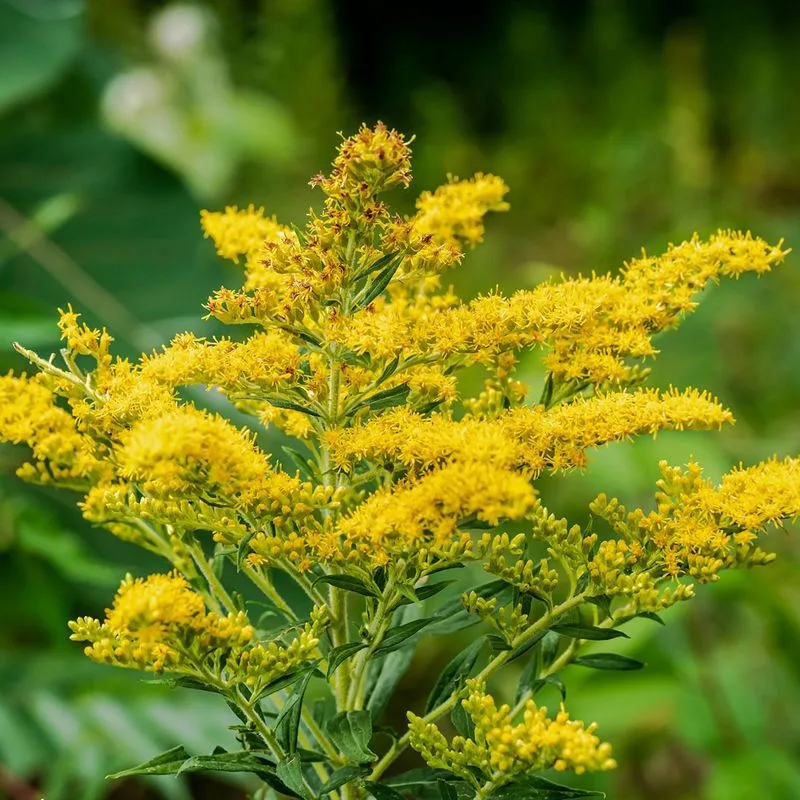
Goldenrod is a hardy perennial known for its towering stems and clusters of bright yellow flowers. Thriving in full sun and various soil types, it requires minimal care.
Goldenrod is drought-tolerant and perfect for naturalizing in meadows or wildflower gardens. This plant attracts pollinators, supporting local ecosystems and biodiversity.
Its deep roots help improve soil quality, making it a valuable addition to sustainable gardens. While some gardeners mistake it for causing allergies, goldenrod is often innocent.
It’s a robust, self-sustaining plant that adds color and life to any garden without the need for fertilizers.
Ferns
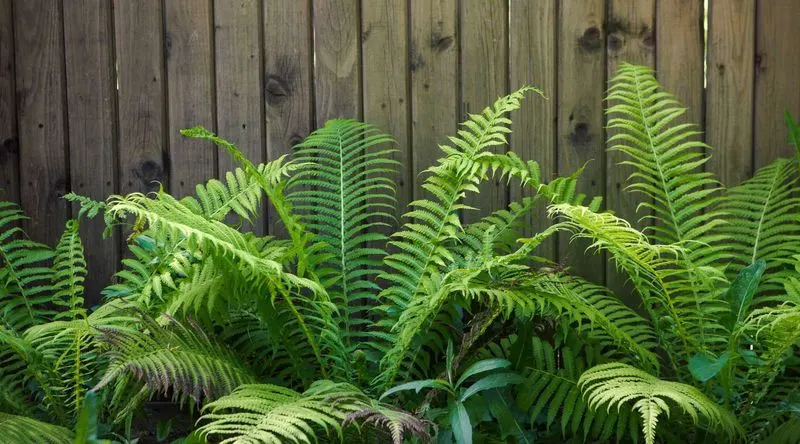
Ferns are ancient plants that thrive in shaded, moist environments. Known for their lush, feathery fronds, ferns add texture and depth to gardens.
They prefer rich, well-drained soil and require little maintenance once established. Ferns are ideal for woodland gardens and shaded borders.
These plants are resilient, adapting to a range of conditions and thriving without fertilizers. Their ability to improve soil structure makes them valuable for sustainable gardening.
With various species available, ferns offer diverse options for gardeners seeking low-maintenance, eco-friendly plants that enhance shaded areas with greenery.
Oxeye Daisy
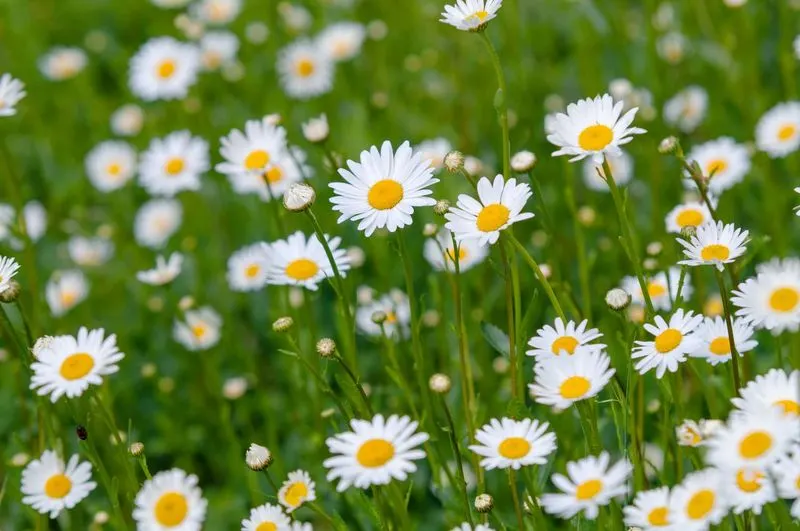
Oxeye Daisy is a cheerful perennial known for its classic white petals and sunny yellow centers. Thriving in full sun and well-drained soil, it requires minimal care once established.
This plant is drought-tolerant and ideal for wildflower meadows and naturalized areas. Oxeye Daisy attracts pollinators, supporting garden biodiversity and ecosystem health.
It’s perfect for borders, cottage gardens, and mass plantings. Deadheading encourages reblooming and extends the flowering period.
The ability to thrive without fertilizers makes Oxeye Daisy a popular choice for sustainable gardening, offering beauty and environmental benefits.
Sea Holly
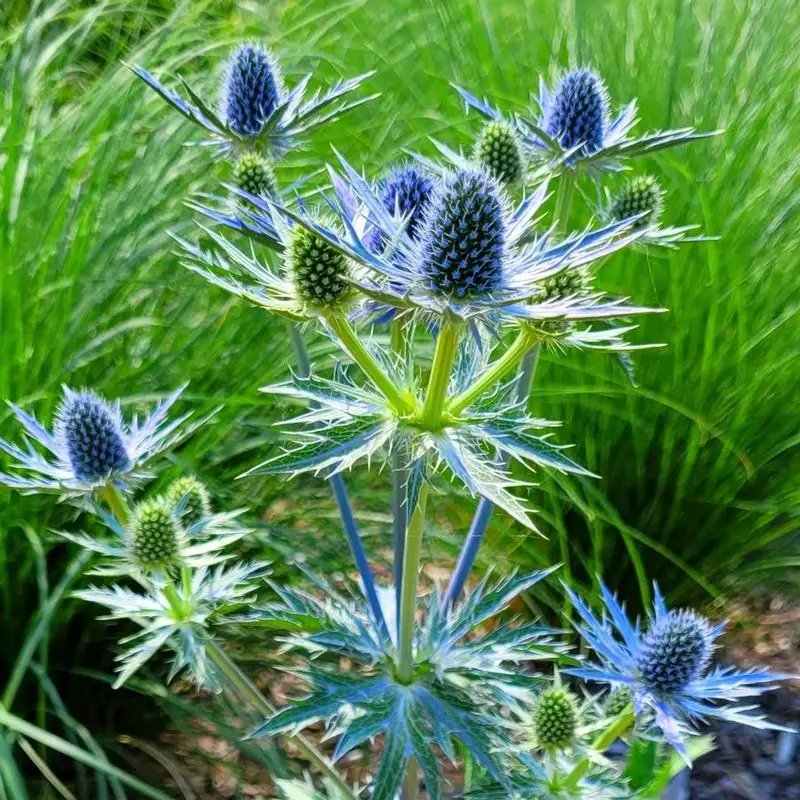
Sea Holly is a unique perennial known for its spiky blue flowers and silvery foliage. It thrives in sandy, well-drained soil and full sun, requiring little care once established.
Sea Holly is drought-tolerant and perfect for coastal gardens and dry landscapes. Its striking appearance adds visual interest to borders and garden beds.
This plant attracts pollinators and is resistant to pests and diseases. Sea Holly’s ability to flourish without fertilizers makes it a valuable addition to sustainable gardens.
Its resilience and distinctive look make it a favorite among gardeners seeking low-maintenance, self-sustaining plants.

